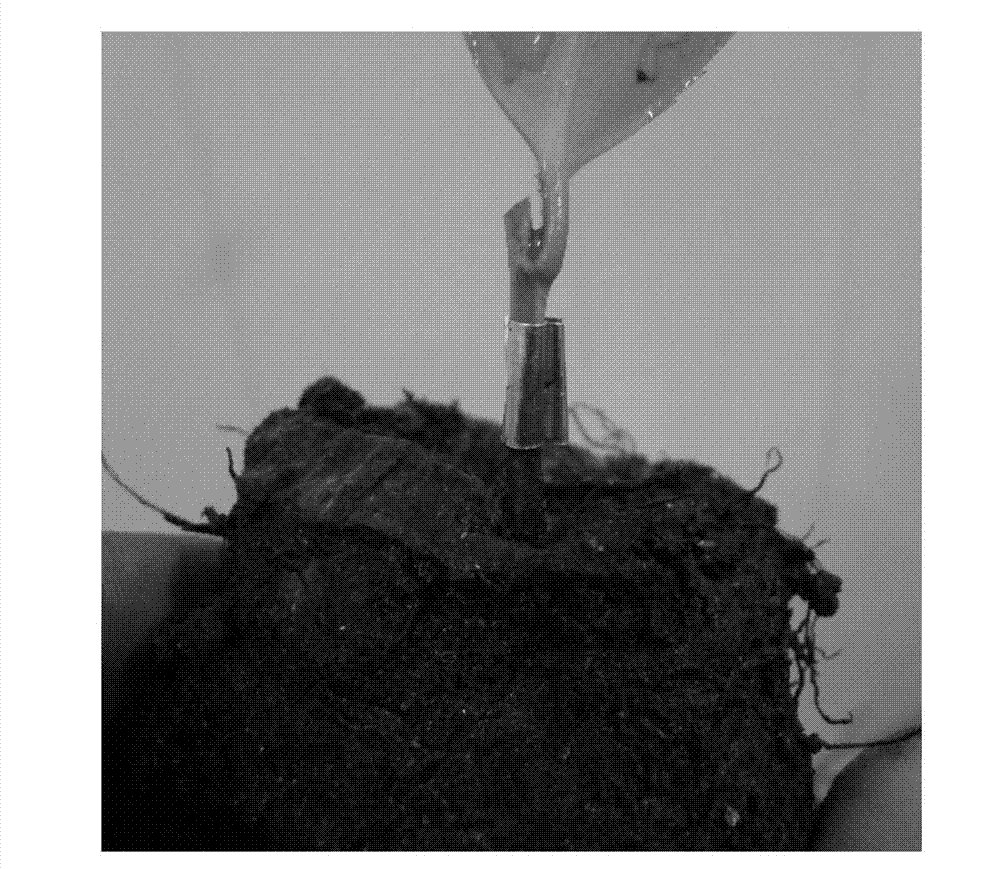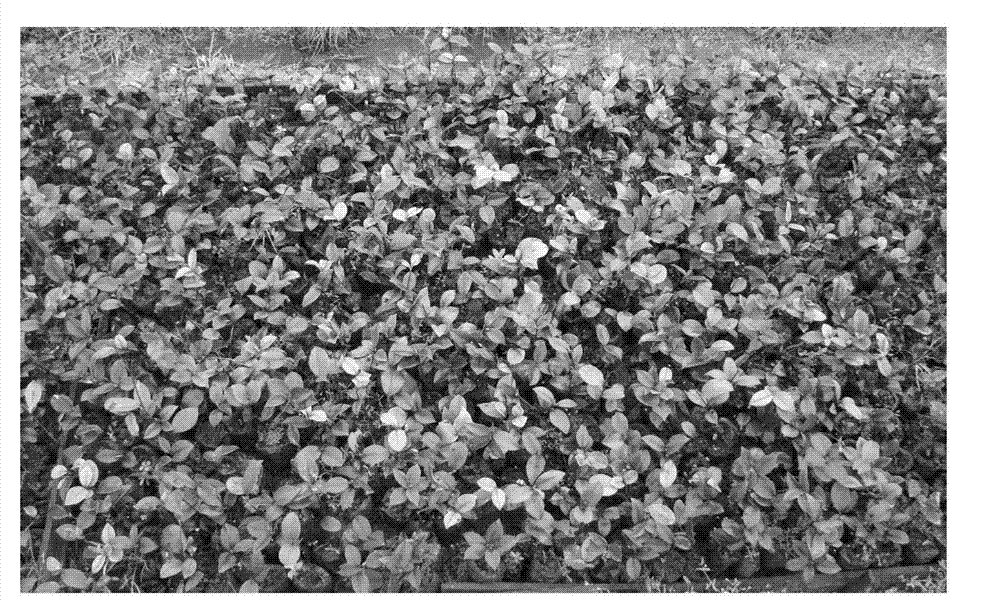Grafting and seedling-cultivating method for Theaceae plant
A technology for grafting seedlings and camellia, which is applied in the agricultural field, can solve problems such as difficulty in controlling the thickness of rootstock seeds, affecting the survival rate of uphill afforestation, and serious damage to the root system, so as to ensure the survival rate of grafting, increase the survival rate of afforestation, and prolong grafting The effect of aging
- Summary
- Abstract
- Description
- Claims
- Application Information
AI Technical Summary
Problems solved by technology
Method used
Image
Examples
Embodiment 1
[0027] In the container seedling breeding base of Jinyun County, Zhejiang Province, the spikes of two Camellia oleifera varieties, Changlin 4 and Changlin 40, were selected for grafting container seedlings on tender stock. The test process is as follows: the full-bodied Camellia oleifera seeds that have been screened are stored in a cold storage at 0-5°C from December to January of the next year, wrapped with wet cotton, taken out of the cold storage in March, and buried in a sand table In the middle, the thickness of the sand table is 5cm-10cm, spread 4-6cm thick fine sand, put it into the artificial climate box, keep the air humidity between 80%-90%, the light intensity is 5000lux, and the temperature is controlled at 15-20℃ During 15-20 days, the seeds in the sand bed begin to germinate, stop watering, take out the buried seeds, screen out the germinated seeds, and the hypocotyls elongate 3-6cm The seeds of the seed are put into the non-woven fabric container that has place...
PUM
 Login to View More
Login to View More Abstract
Description
Claims
Application Information
 Login to View More
Login to View More - R&D
- Intellectual Property
- Life Sciences
- Materials
- Tech Scout
- Unparalleled Data Quality
- Higher Quality Content
- 60% Fewer Hallucinations
Browse by: Latest US Patents, China's latest patents, Technical Efficacy Thesaurus, Application Domain, Technology Topic, Popular Technical Reports.
© 2025 PatSnap. All rights reserved.Legal|Privacy policy|Modern Slavery Act Transparency Statement|Sitemap|About US| Contact US: help@patsnap.com



